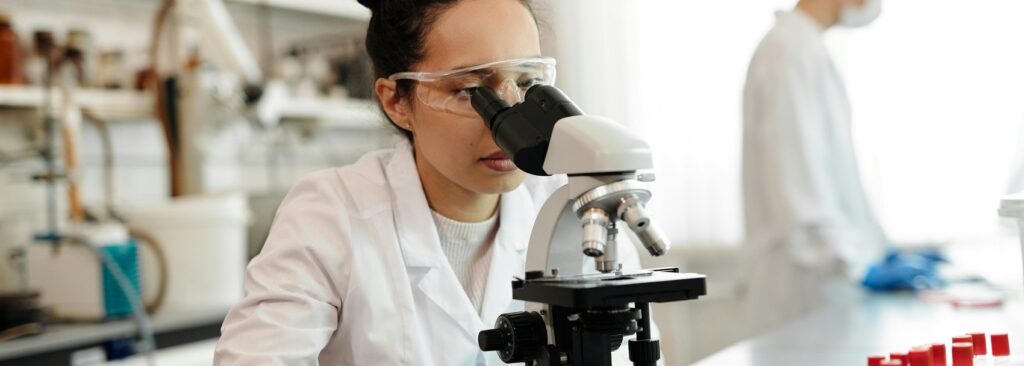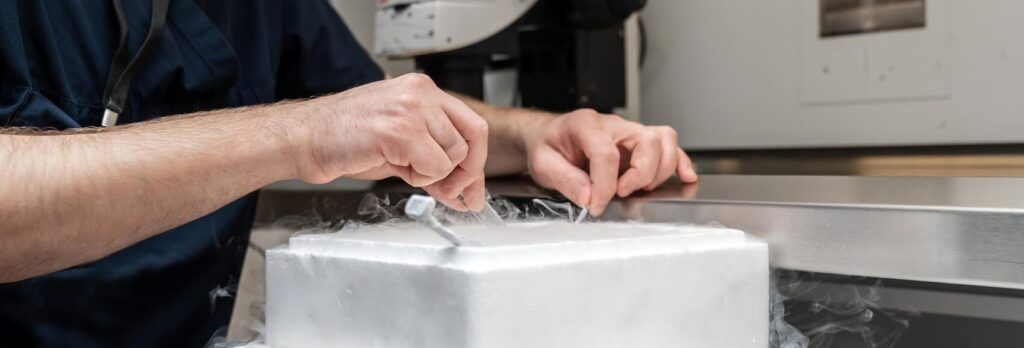
What Is Fertility Preservation?
A Guide to Protecting Your Future Family-Building Options
When it comes to family planning, timing is deeply personal. Fertility preservation allows you to safeguard your reproductive potential so you can pursue parenthood when the time feels right.
At First Fertility, we offer advanced fertility preservation options—supported by board-certified reproductive endocrinologists, reproductive gynecologists, fertility specialists, and highly skilled embryologists—so you can make confident, informed decisions about your future.
Below, learn what fertility preservation involves, how it works, and who may benefit most from freezing eggs, sperm, or embryos.
If you want more in-depth information about egg freezing, specifically, download our eBook.
What Is Fertility Preservation?
Fertility preservation, also known as cryopreservation, is the process of freezing and storing reproductive cells (eggs or sperm) or embryos for future use. These preserved samples can be safely stored for years—sometimes decades—and later used in treatments such as in vitro fertilization (IVF) or intrauterine insemination (IUI) to help achieve pregnancy.
This option gives individuals and couples the flexibility to plan their families around their personal, medical, or professional goals.
Who Can Benefit from Fertility Preservation?
Fertility preservation is an empowering choice for many situations. You may consider it if you:
- Want to delay family-building for career, education, or personal reasons.
- Are approaching your mid-30s and wish to preserve reproductive options while egg quality is typically higher.
- Are preparing for medical treatments, such as chemotherapy or radiation, that could affect fertility.
- Are part of the LGBTQ+ community and planning to build a family in the future.
- Are undergoing gender-affirming care and want to protect your reproductive potential before treatment.
At First Fertility, everyone receives an individualized plan and the full support of a compassionate medical team throughout the process.
How Fertility Preservation Works
The fertility preservation process starts with an in-depth consultation. Your specialist will review your health history, hormone levels, and long-term goals to recommend the right approach for you.
Egg Preservation (Oocyte Cryopreservation)
Self-administered hormonal medications are used to stimulate multiple eggs to mature. Over about two weeks, your provider tracks this progress through ultrasounds and bloodwork. Once ready, the eggs are retrieved through a brief outpatient procedure and frozen using vitrification, a rapid freezing method that helps protect their structure and integrity.
Sperm Preservation
Sperm samples are collected, processed, and frozen using advanced cryogenic techniques that maintain quality for future use in IVF or IUI.
Embryo Preservation
After eggs are retrieved and fertilized with specially prepared sperm in a controlled laboratory setting, the resulting embryos are closely monitored. Embryos that meet specific laboratory criteria are then frozen and stored for potential transfer at a later time. If you’re planning to undergo an IVF cycle, you also have the option to freeze additional embryos for future family building.
Studies show that pregnancy success rates using frozen embryos are comparable to those using fresh embryos, offering strong reassurance about long-term outcomes.*
Common Questions About Fertility Preservation
Protect Your Future with Fertility Preservation
Fertility preservation isn’t just about science or medicine—it’s about choice, preparation, and the freedom to build your family on your own timeline.
If you’re considering egg freezing, sperm preservation, or embryo cryopreservation, our specialists at First Fertility will walk you through every step with compassion and clarity.
Schedule your consultation today and take the first step toward protecting your future possibilities.
*Source: BMJ



